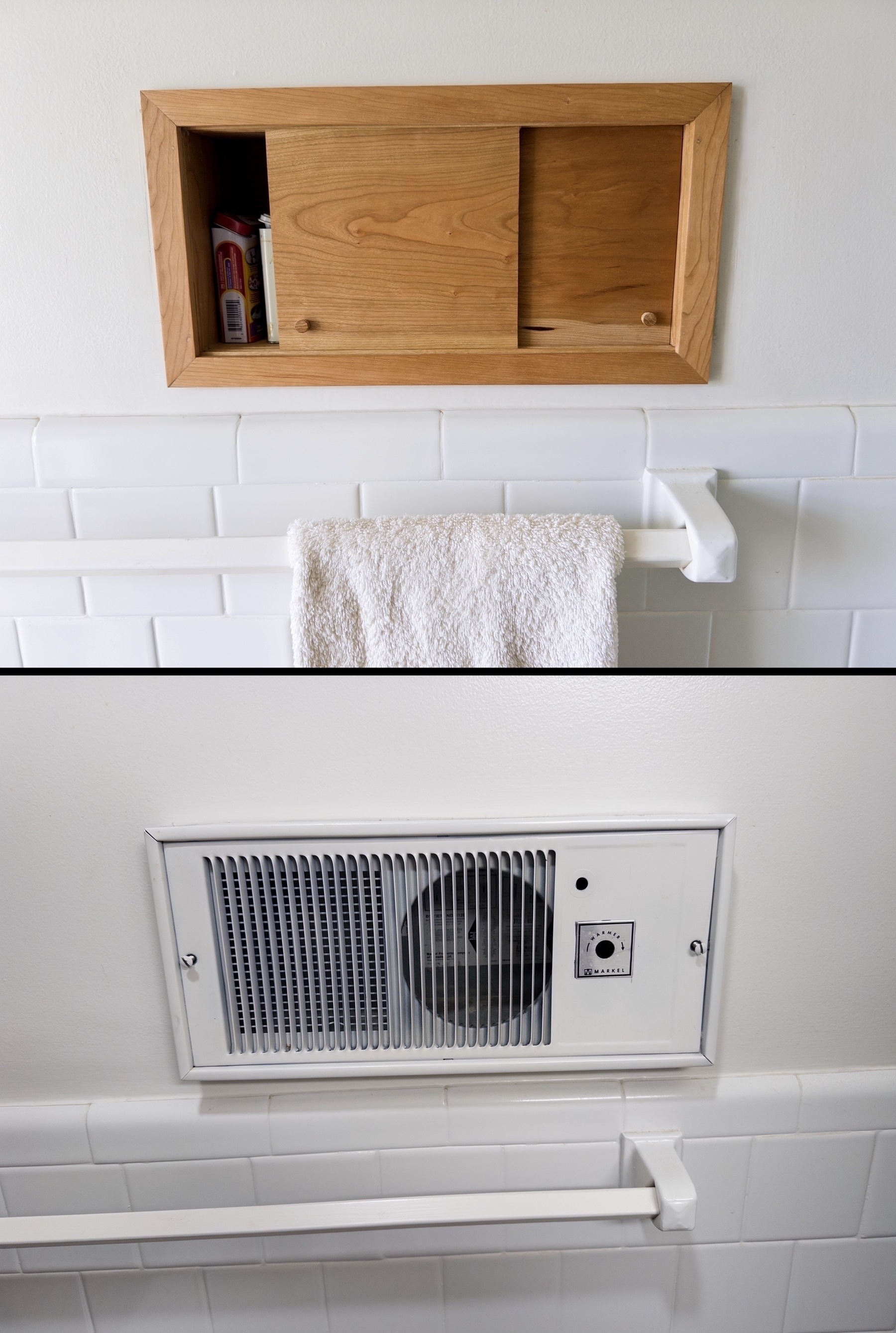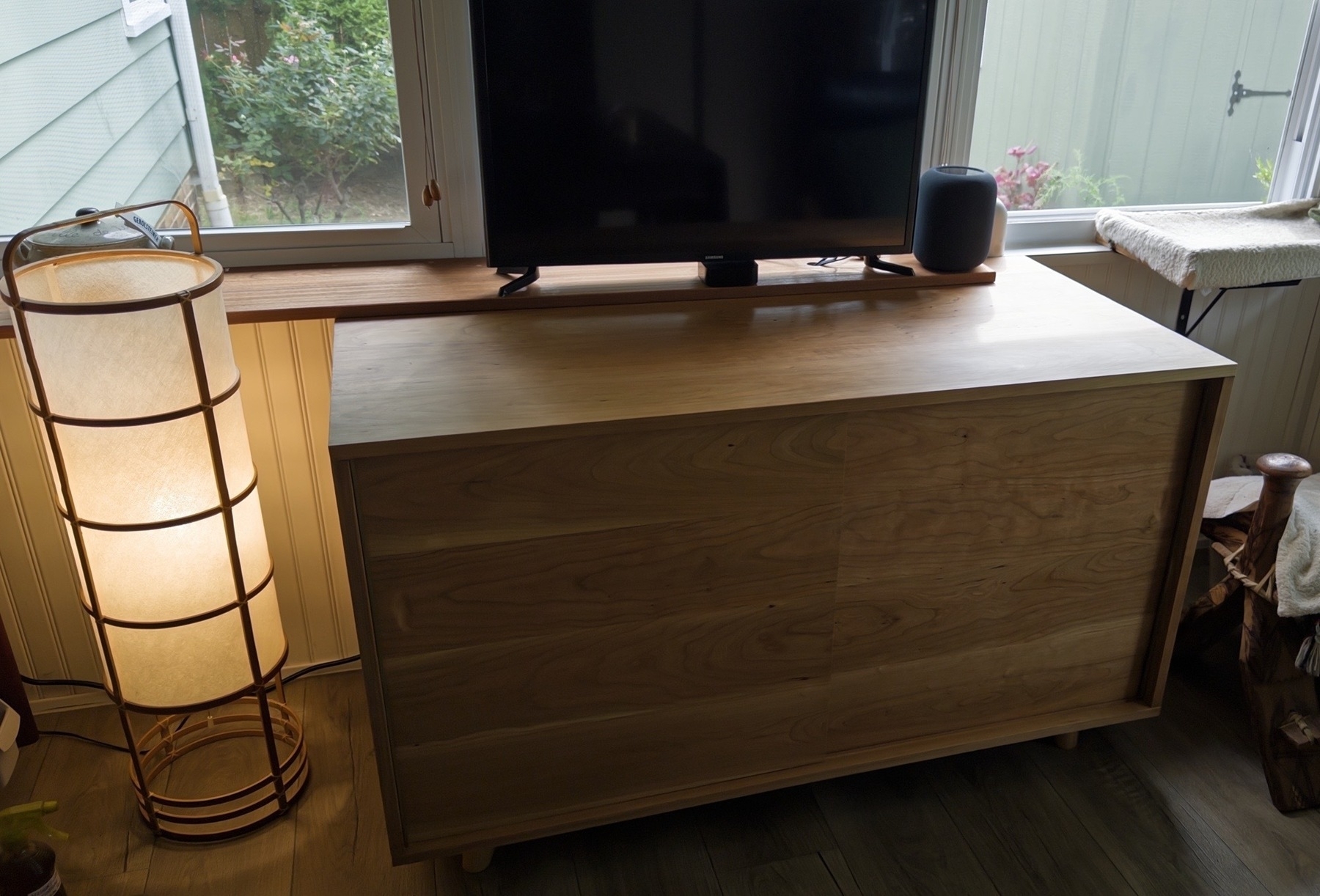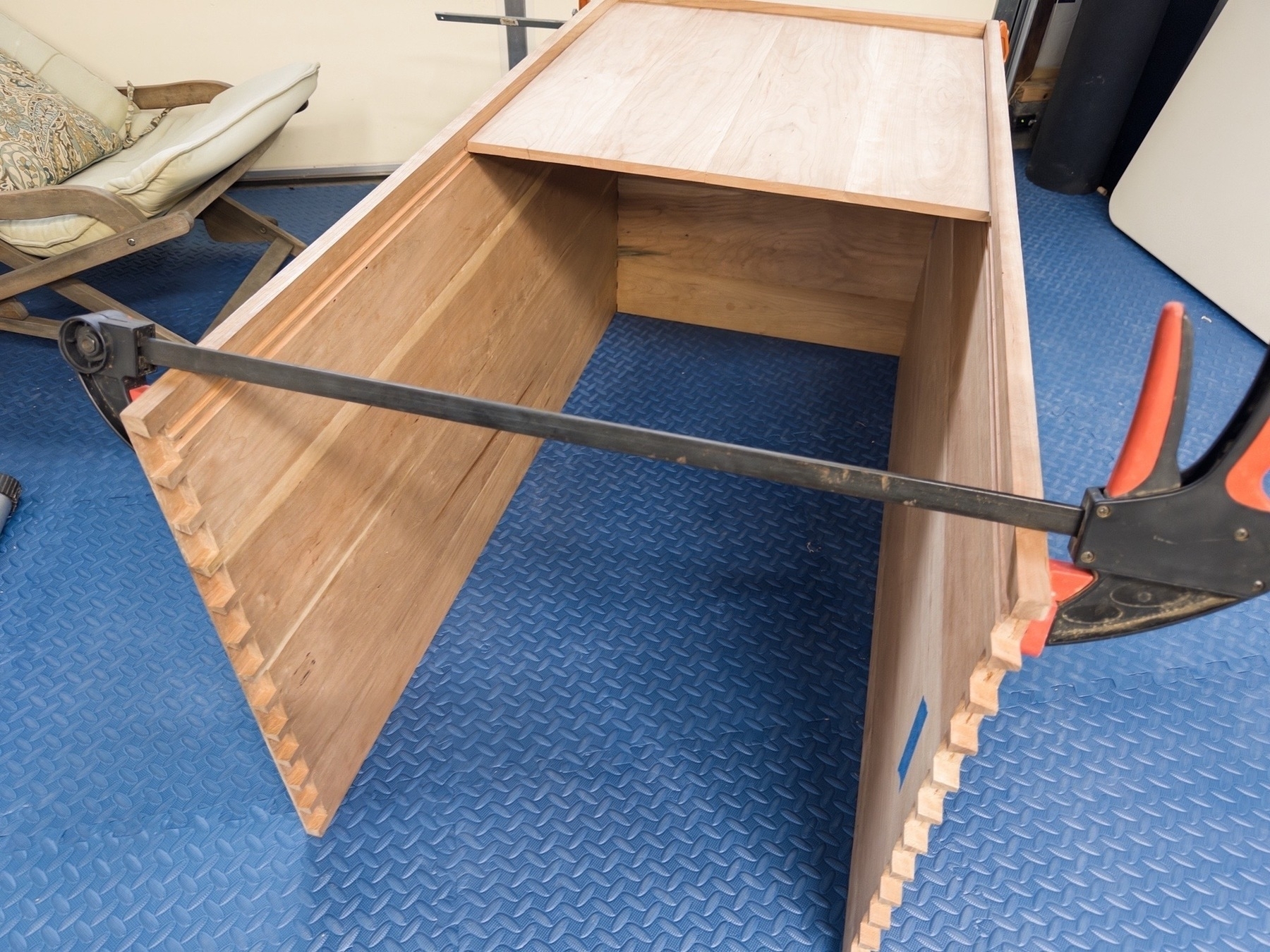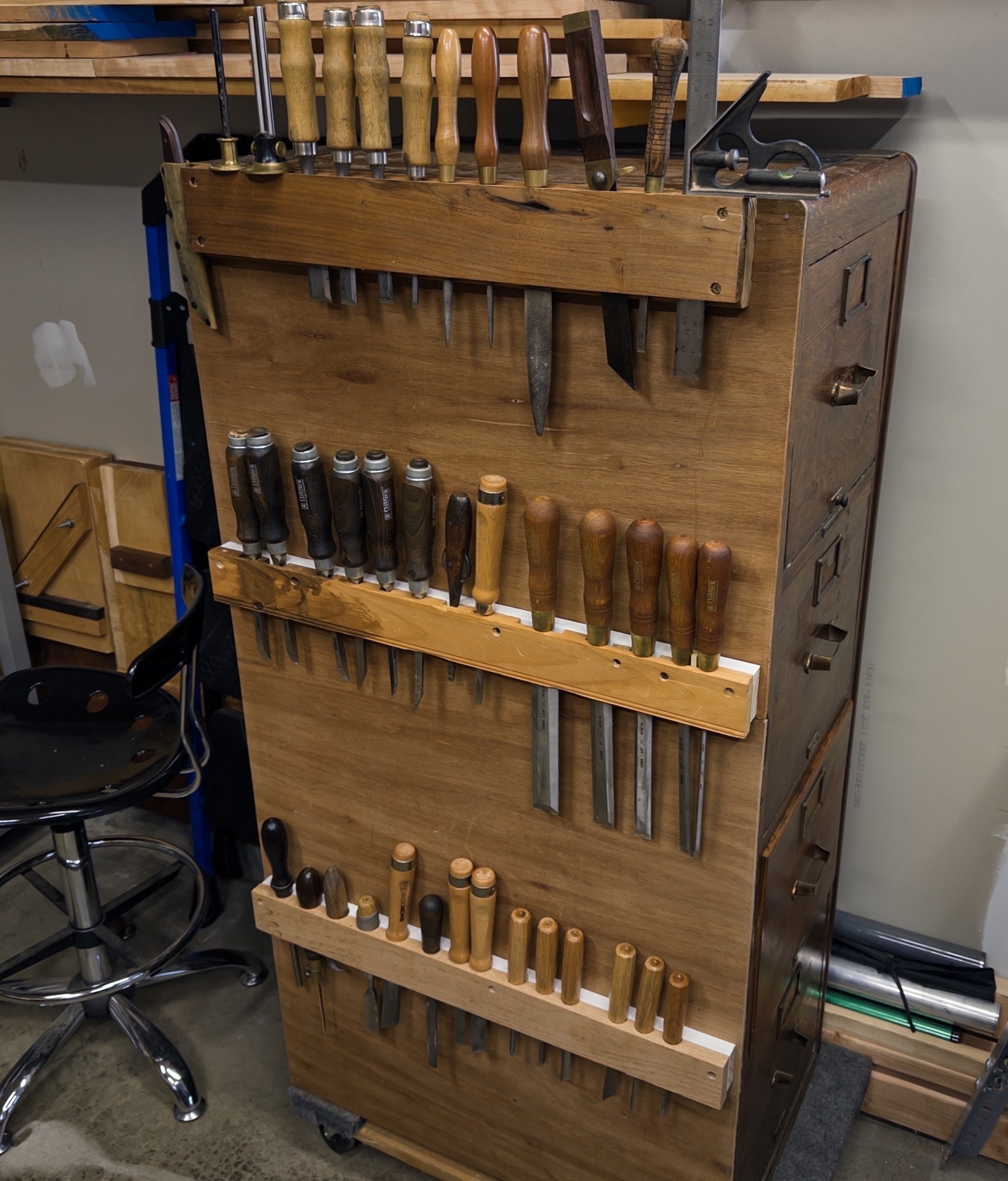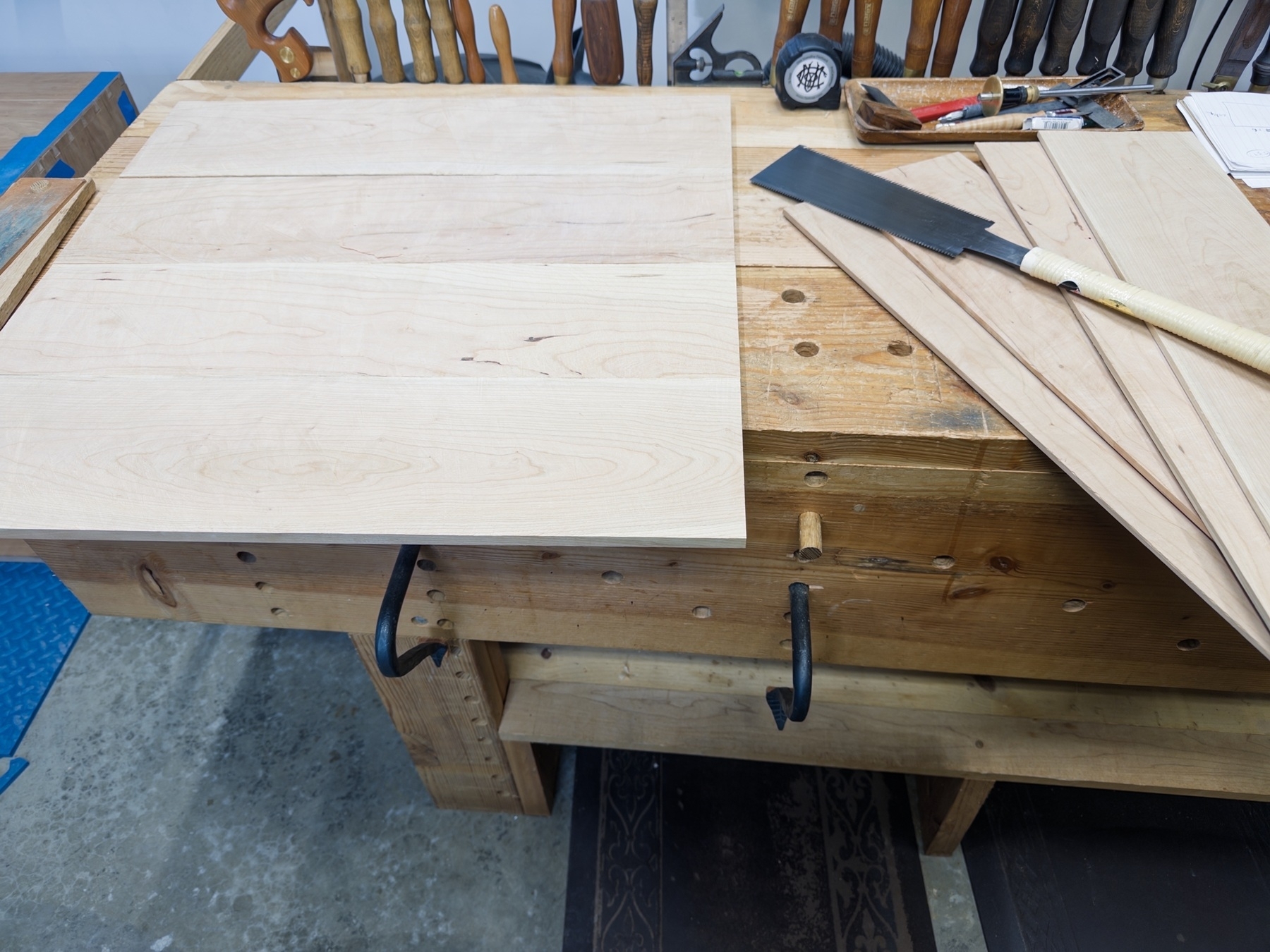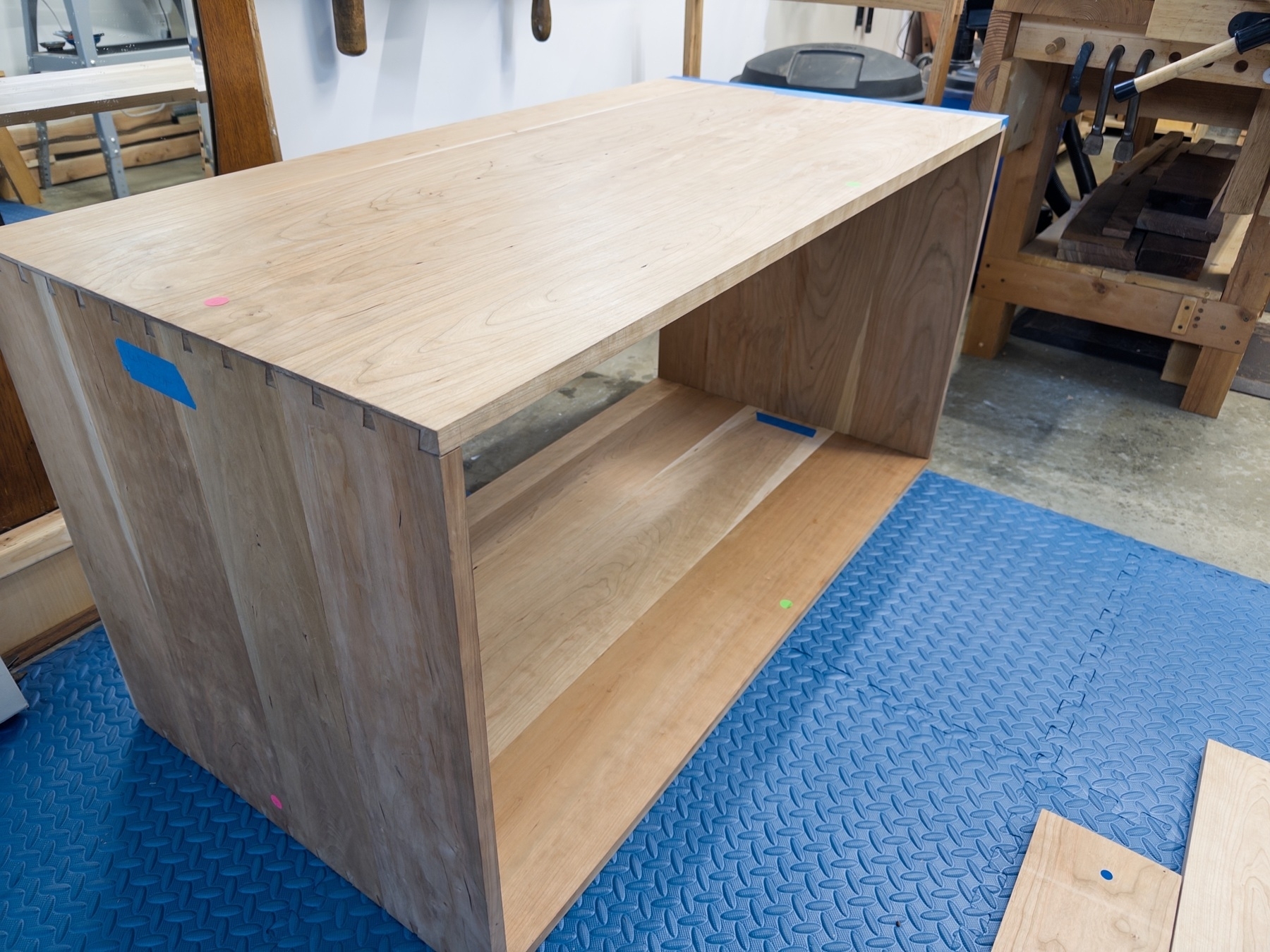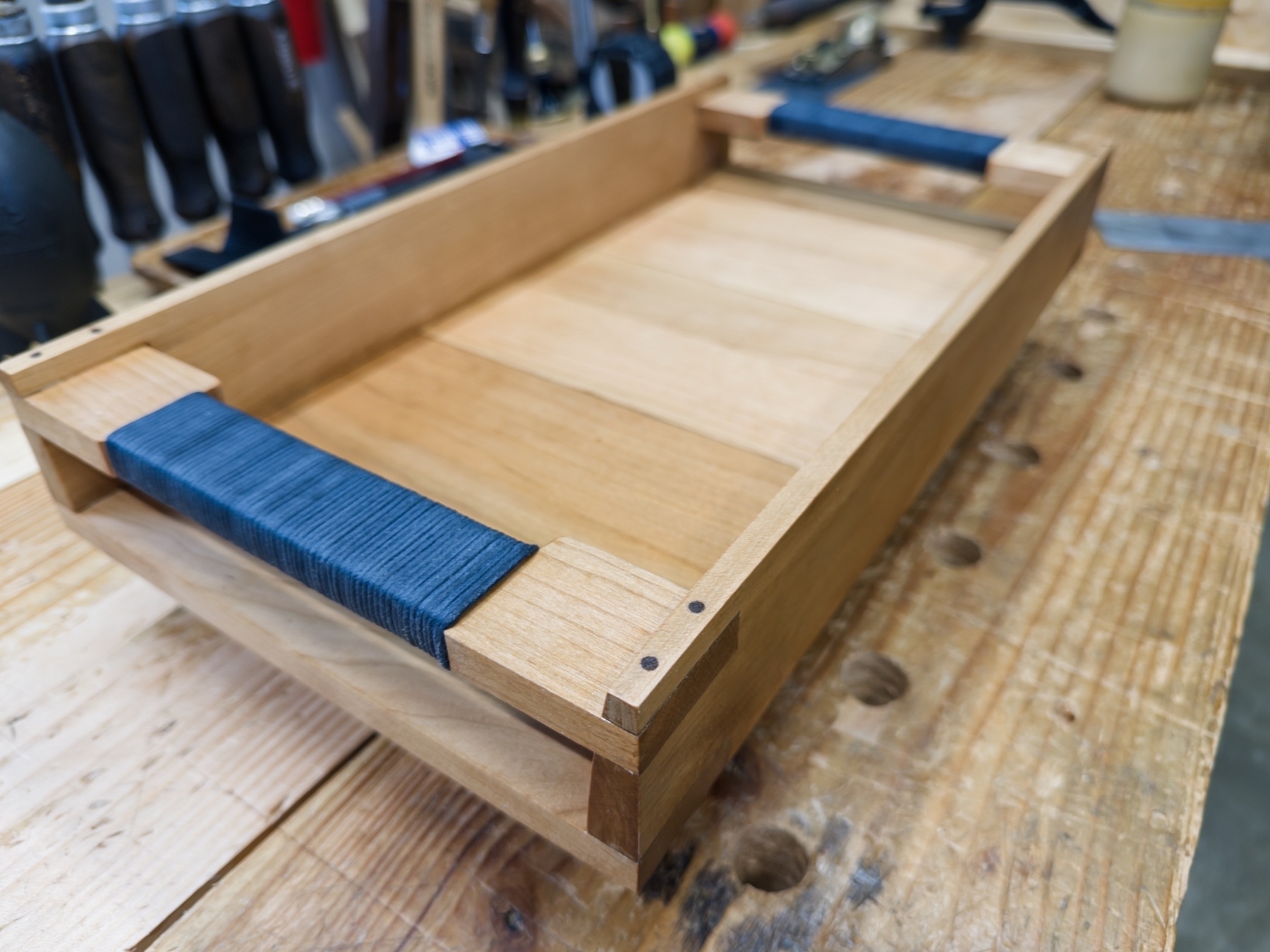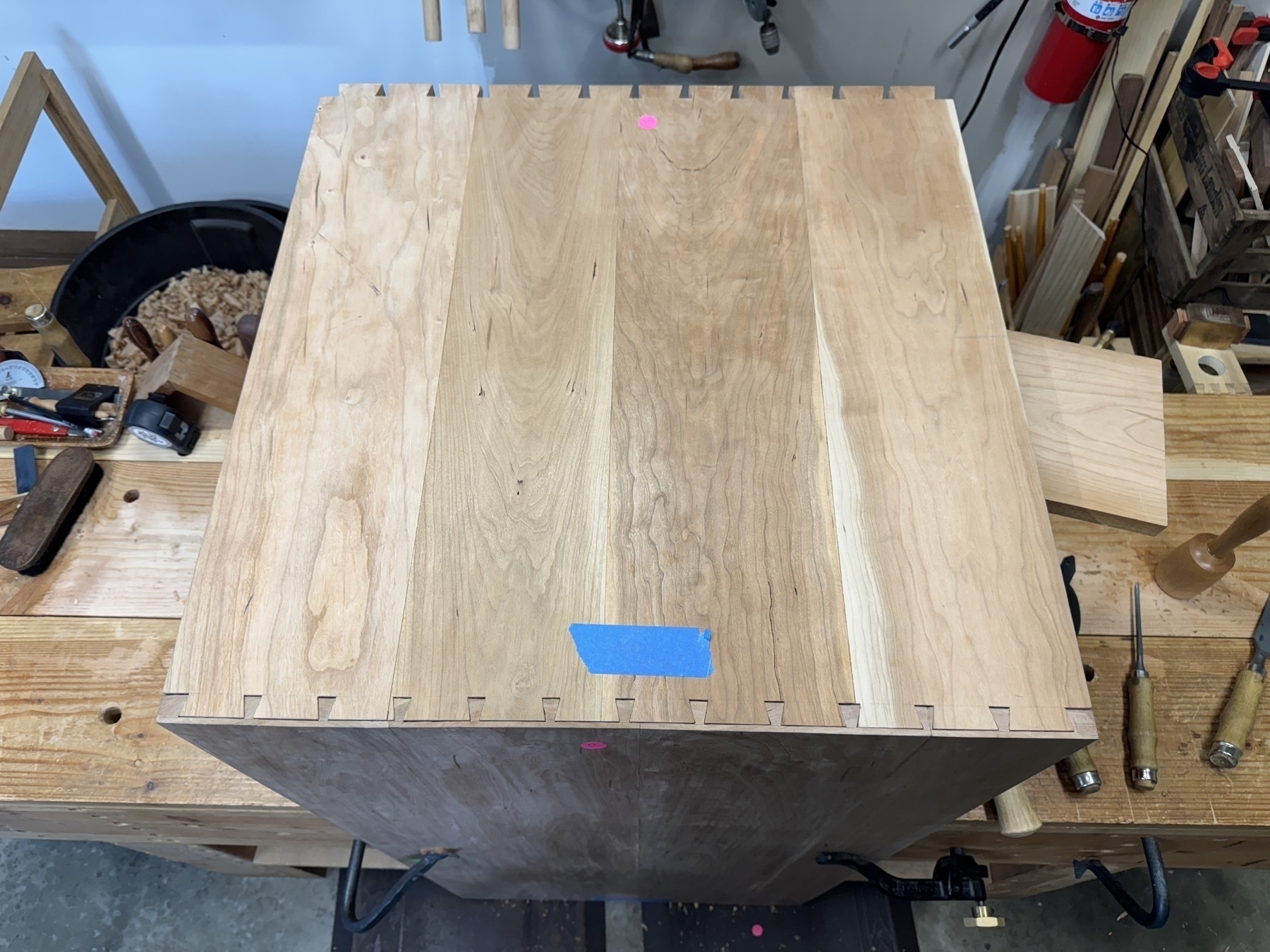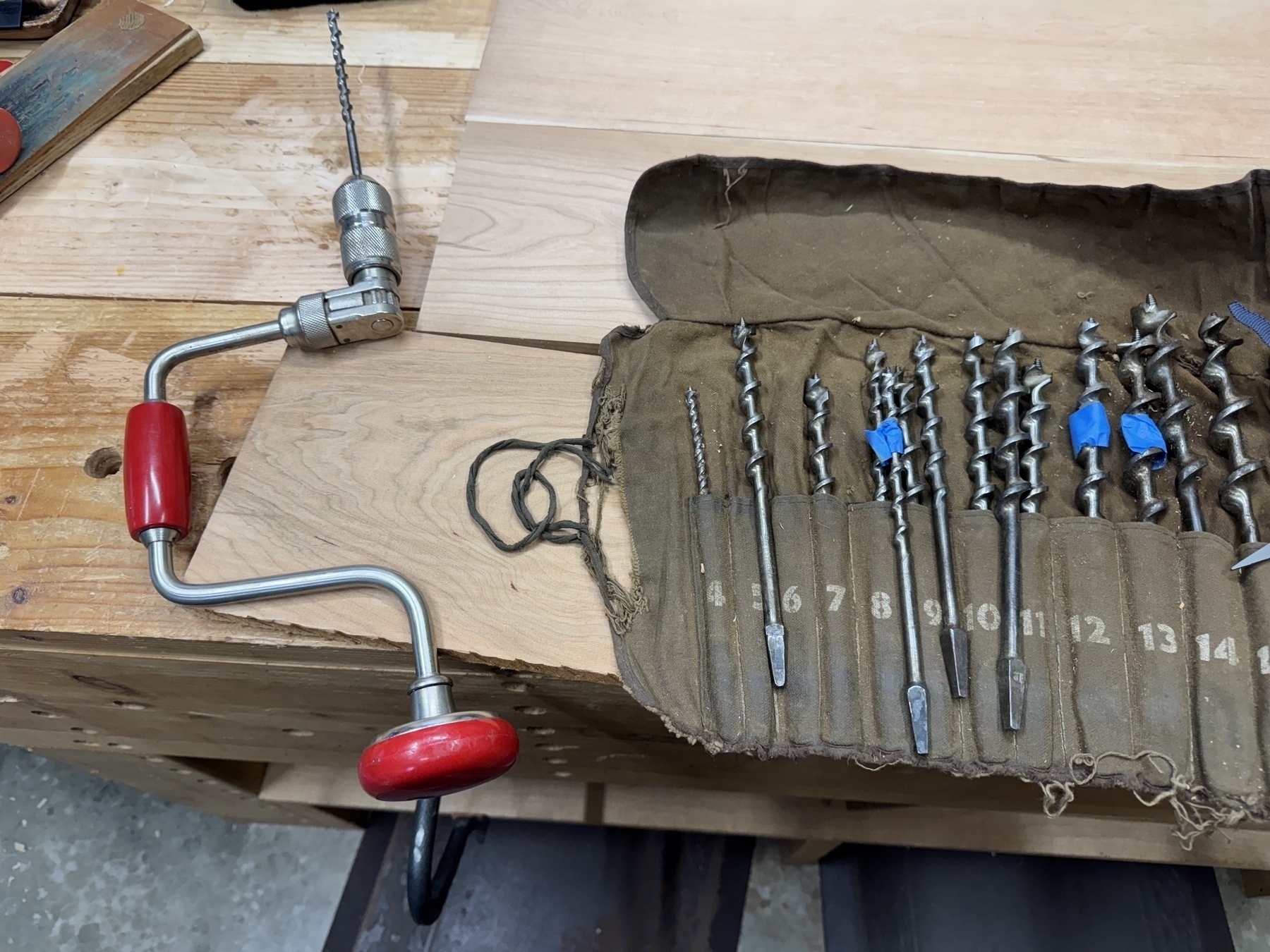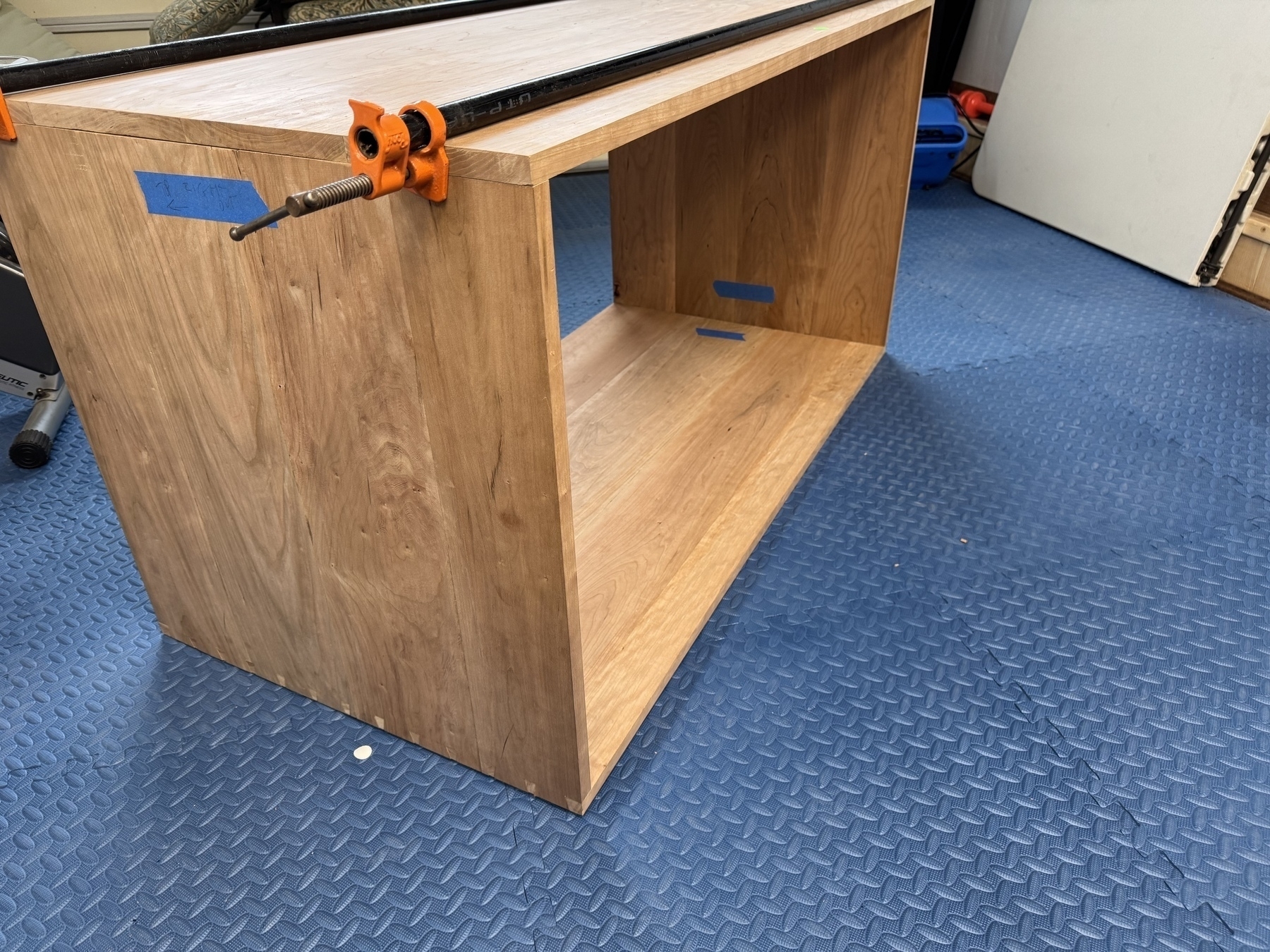This was a fun, quick project: I used offcuts from the midcentury cabinet I just completed to make a small first aid station in the bathroom. This replaces an old, broken wall heater that came with the house. I made it removable in case I ever need to get to the electrical wiring I hid away in the wall. The frame of the cabinet has tiny little walnut splines for strength and it’s attached to the 1/4 inch box with glue and four dowels (made from toothpicks).
